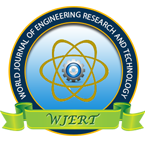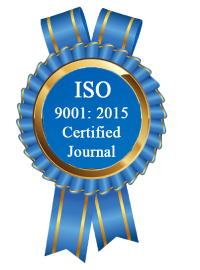| All | Since 2020 | |
| Citation | 172 | 110 |
| h-index | 7 | 5 |
| i10-index | 1 | 0 |
WJERT Citation 
Login
News & Updation
Abstract
MODELLING OF STRUCTURAL PROPERTIES OF RICE HUSK AND SAWDUST IN TIMBER PANEL LAMINATES USING SOLID WORKS
Agulefoh C. U.*, Ezeagu C. A., Adinna B. O., Ezema N. M., Ugboaja C., Uzodimma F. C., Ubani O. U. and Chidolue C. U.
ABSTRACT
This study investigates the strength properties of rice husk and sawdust laminates using Solid Works modeling. With increasing environmental concerns over the disposal of agricultural and wood-processing waste in Nigeria, specifically sawdust from timber production and rice husk from rice milling; this research explores sustainable alternatives for utilizing these materials. The goal is to assess the structural, mechanical, and physical properties of particleboards fabricated from rice husk and sawdust, with an emphasis on their potential application as substitutes for timber in the construction industry. The laminateswere produced using urea formaldehyde as an adhesive, with laminates tested for properties such as water absorption, static bending, impact energy, compression strength, ash content, moisture content, thickness swelling, and internal bond strength. Surface appearance, Charpy impact tests, and torsional resistance were also evaluated. The Charpy impact test showed that the laminate made with Rice husk has the highest impact strength of 4.8kJ/m and also had the highest racking force in both flexural (95kN) and compressive (107kN) in torsional box beam test and also had the highest modulus of rupture of 17.92N/mm2. The results demonstrated that rice husk particleboard exhibited superior mechanical properties, including higher hardness, torsional resistance, and lower water absorption compared to sawdust laminates. Sawdust laminates, while viable, showed weaker structural performance. Solid Works modelling further confirmed the superior strength of rice husk laminates under load conditions. This research highlights the feasibility of utilizing rice husk and sawdust as environmentally sustainable alternatives to timber, offering a pathway to reducing deforestation and improving waste management practices in Nigeria's construction industry.
[Full Text Article] [Download Certificate]
